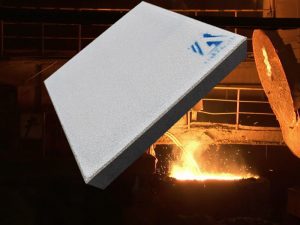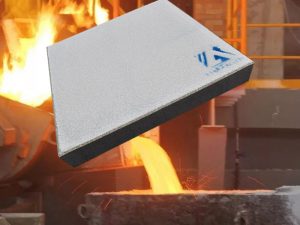Ceramic foam filter manufacturer
In the aluminum production industry, taking into account the cost, quality, process, and other factors, most manufacturers of alumina ceramic foam filter plate (hereinafter referred to as ceramic foam filters) requirements are often controlled below 1250 °C firing temperature, but the performance of the products produced must also meet the JC/T895-2001 foam ceramic filter industry standards: through-hole ≥ 80%, flexural strength ≥ 0.3 MPa, compressive strength ≥ 0.5 MPa.
In the process of sintering ceramic foam filters, many manufacturers choose to abandon the firing method due to the concentration of flue gas emissions, large emissions, difficulty in flue gas treatment, and unsatisfactory treatment effects. The tunnel kiln has a large height, small width, and large temperature difference, and is not suitable for sintering large-scale alumina foam ceramics. And the width of the roller kiln, large, stable product quality, small temperature difference, continuous smoke exhaust, flue gas can be used as combustion air to introduce high-temperature area, energy saving, and environmental protection, etc., compared with shuttle kilns and tunnel kilns, it is more suitable for the sintering of the alumina ceramic foam filter.
The quenching fan is set behind the high-temperature firing belt of the roller kiln and in front of the residual hot fan. The main purpose is to carry out high-temperature rapid cooling and cooling of ceramic products, and avoid product liquid phase crystal separation and grain growth, thereby improving the mechanical strength of the product. For roller kiln firing buildings or daily ceramics, the quenching fan controls the quenching temperature by introducing the air volume through the quenching duct, and the temperature of the quenching temperature is different, and the product performance obtained is also different. Sometimes the quenching temperature is not well controlled, which not only cannot improve the mechanical strength of the product but also leads to the cracking of ceramic products. For alumina foam ceramics with low temperature (≤1250°C) sintered and with a porosity of up to 80% or more, the control of the quenching temperature is very different from that of ordinary ceramic products.
First of all, the strength of alumina ceramic foam filters mainly depends on the binding strength of aluminum dihydrogen phosphate in the formula at high temperatures, and there is no crystal liquid phase crystallization, which does not require rapid cooling; Secondly, the heat storage performance of the ceramic foam filters itself is extremely poor, and the foam ceramic products begin to cool down rapidly after being fired into the belt at high temperature; Finally, the foam ceramic is composed of a three-dimensional mesh structure, and the mesh ribs are easy to burst or damage under rapid cooling, which affects the strength of the product and the slag drop is obvious. Therefore, it is of great significance to study how to use relevant factors to effectively improve the quenching temperature of foam ceramics, which is of great significance for improving the mechanical strength of foam ceramic products and reducing slag drop.




